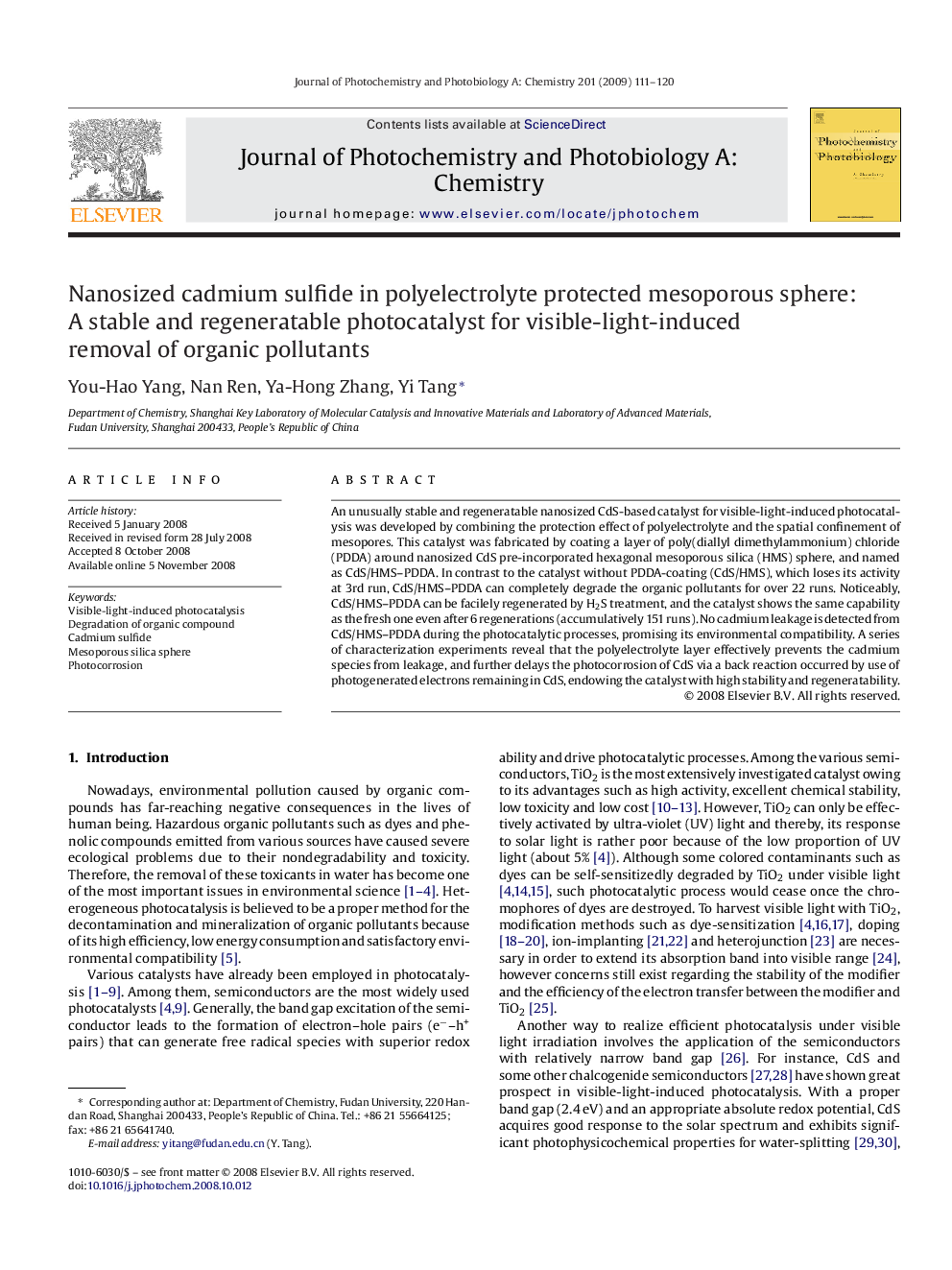| Article ID | Journal | Published Year | Pages | File Type |
|---|---|---|---|---|
| 28953 | Journal of Photochemistry and Photobiology A: Chemistry | 2009 | 10 Pages |
An unusually stable and regeneratable nanosized CdS-based catalyst for visible-light-induced photocatalysis was developed by combining the protection effect of polyelectrolyte and the spatial confinement of mesopores. This catalyst was fabricated by coating a layer of poly(diallyl dimethylammonium) chloride (PDDA) around nanosized CdS pre-incorporated hexagonal mesoporous silica (HMS) sphere, and named as CdS/HMS–PDDA. In contrast to the catalyst without PDDA-coating (CdS/HMS), which loses its activity at 3rd run, CdS/HMS–PDDA can completely degrade the organic pollutants for over 22 runs. Noticeably, CdS/HMS–PDDA can be facilely regenerated by H2S treatment, and the catalyst shows the same capability as the fresh one even after 6 regenerations (accumulatively 151 runs). No cadmium leakage is detected from CdS/HMS–PDDA during the photocatalytic processes, promising its environmental compatibility. A series of characterization experiments reveal that the polyelectrolyte layer effectively prevents the cadmium species from leakage, and further delays the photocorrosion of CdS via a back reaction occurred by use of photogenerated electrons remaining in CdS, endowing the catalyst with high stability and regeneratability.
